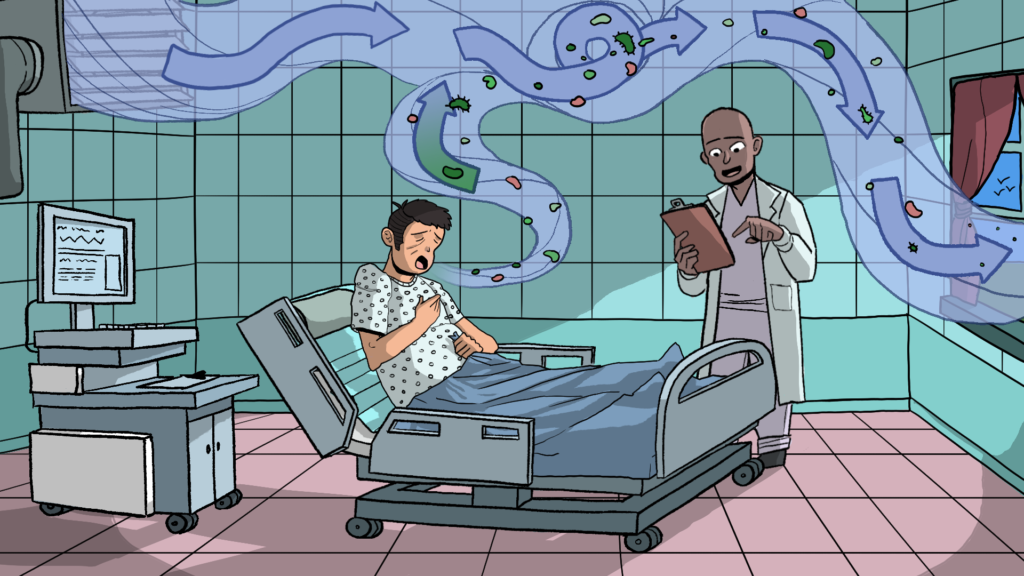Something in the air: How do HVAC systems and building designs influence the spread of human pathogens?

A Texas A&M AgriLife Research scientist is studying how heating, ventilation and air conditioning (HVAC) system configurations and building designs could mitigate the spread of microorganisms, including viruses, that are detrimental to human health.
Dr. Maria King, director of the Center for Agricultural Air Quality Engineering and Science in the Department of Biological and Agricultural Engineering, recently received a $400,000, two-year National Institutes of Health grant to study the aerial paths of pathogens in health care facilities. The study should shed light on a largely invisible aspect of building design that has a large impact on human health.
King said the study bridges scientific disciplines including biology, virology, computational modeling and engineering to applied research in an exciting and innovative way. The study also comes after the world has spent several years dealing with outbreaks of COVID-19, which primarily spreads through the air.
This innovative engineering perspective is making a big impact on the way facilities look at air flow design, King said.
“Using engineering to look at life science problems is making a big difference in how we look at disease prevention,” she said. “We’re realizing the potential that engineering tools and perspectives can present to addressing sanitation or taking on microbes and organisms that impact human health.”
Ventilation systems are a part of most built environments, so the effect of air properties on aerosolized viruses is critically important to study. Researchers will use air flow modeling and simulations to visually pattern how pathogens can move within a space based on the various factors. King’s study will answer fundamental questions related to that movement.
King hopes the new project can educate scientists and engineers about how viruses transport through a space in various bioaerosol forms, such as droplets from a cough or sneeze.
The goal is to help develop and implement interdisciplinary ventilation strategies and guidelines within design, management and monitoring of diseases in healthcare facilities and that can be applied to other built environments.
Furthermore, the team seeks to learn how factors such as temperature, humidity and air velocity transport droplets of various sizes through spaces with varying configurations, dimensions, surface characteristics and other features, she said. Understanding the conditions that contribute to higher exposure to pathogens can direct designs that reduce pathogens’ entrainment and spread.
King has previously shown that combined modeling and sampling approaches can mitigate the movement of airborne infectious microorganisms through ventilation.
For instance, King studied air flow within a meat processing plant with modeling simulations to show how barriers, much like the clear plastic shields at check-out counters in grocery stores, might impact pathogen spread between people working near each other along a processing line. The modeling showed the barriers affected the airflow but that additional shielding above each worker would measurably improve protection.
King said air flow modeling and simulations take an incredible amount of data inputs and sophisticated computational technology in the Texas A&M High Performance Research Computing group resources to correctly visualize airflow patterns. The research team will also use high air volume bioaerosol collectors to investigate how viruses might spread throughout an HVAC system with different intake and exhaust configurations and air exchange rates.
In addition to King, the research team also includes Dr. Sandun Fernando and Dr. Zivko Nikolov, Department of Biological and Agricultural Engineering, and Dr. Gabriel Hamer, associate professor in the Department of Entomology.

